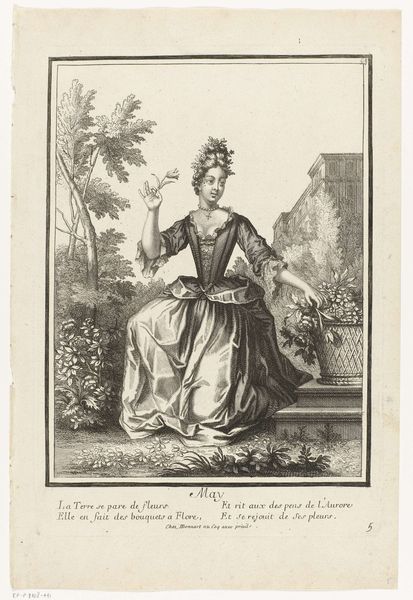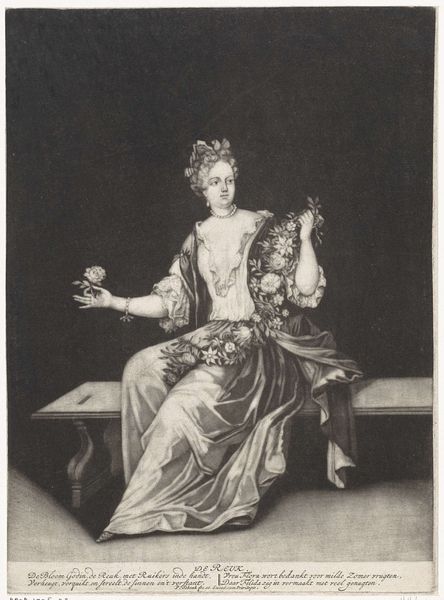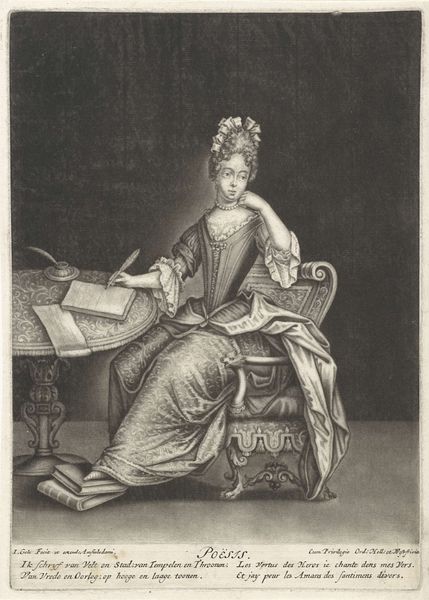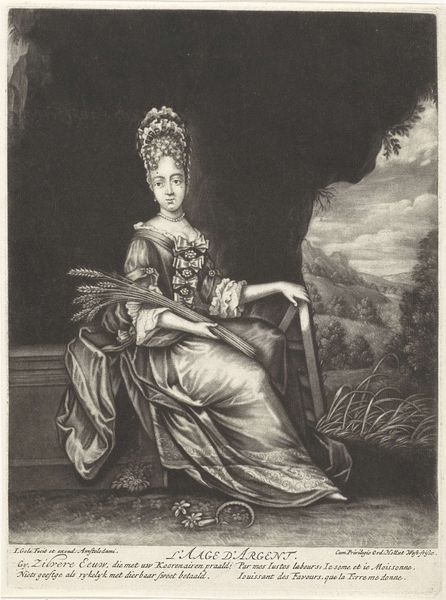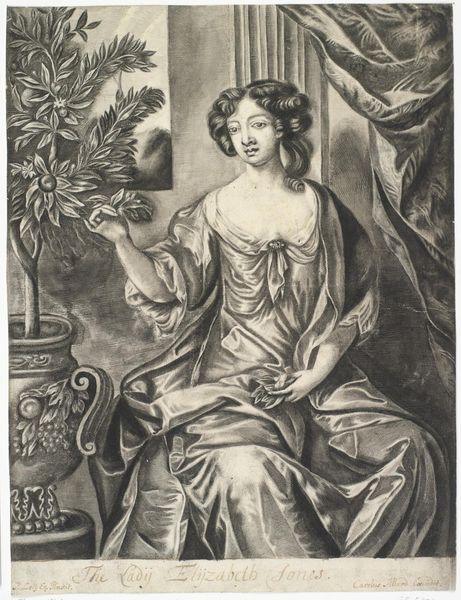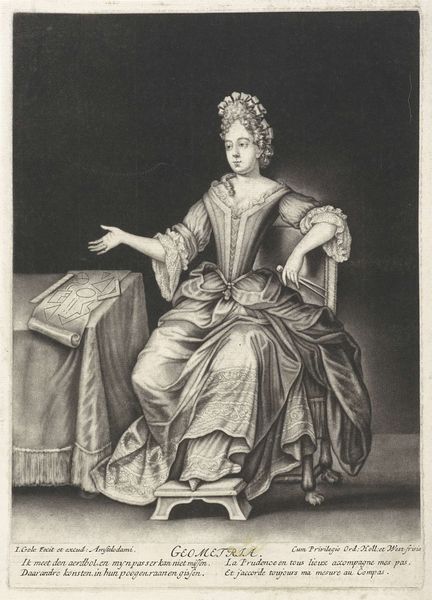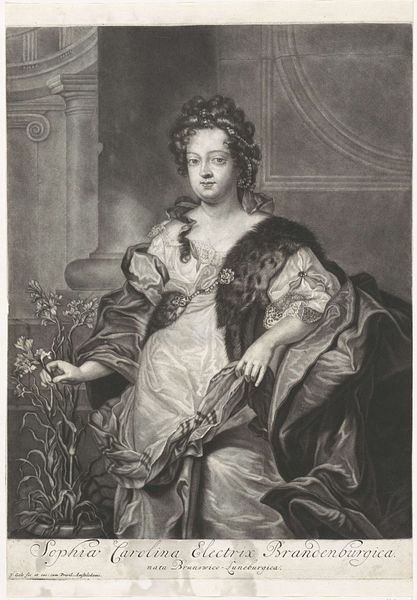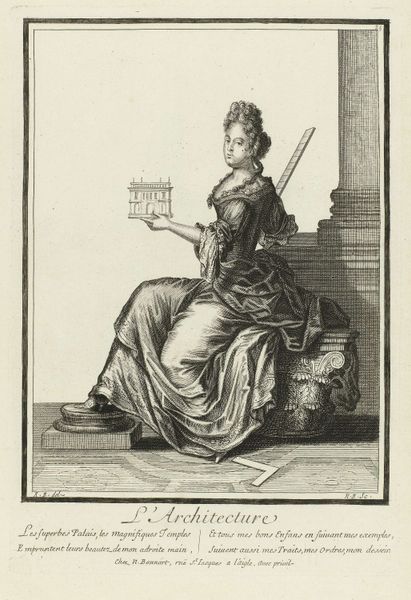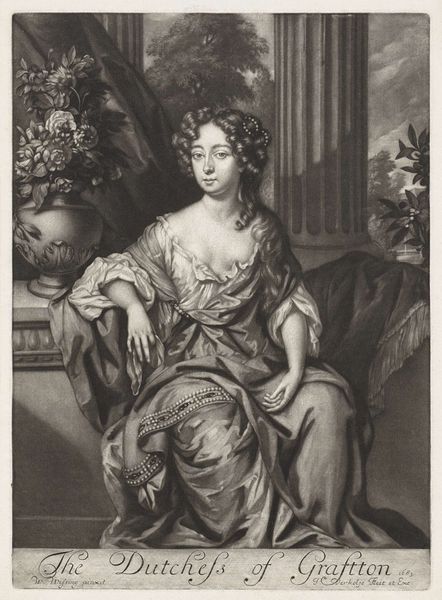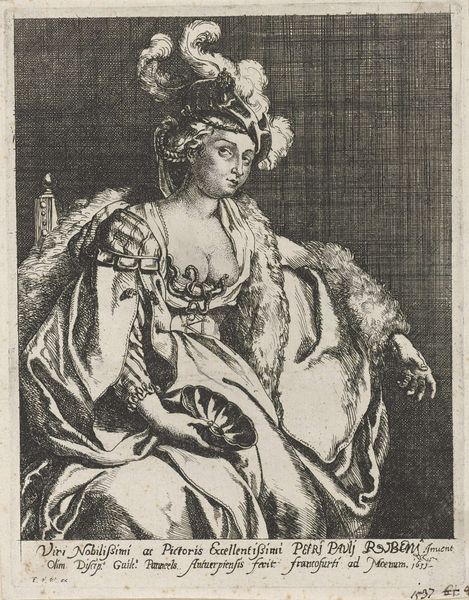
engraving
#
portrait
#
baroque
#
old engraving style
#
landscape
#
flower
#
history-painting
#
engraving
Dimensions: height 236 mm, width 178 mm
Copyright: Rijks Museum: Open Domain
Curator: This is "Mei," an engraving by Pieter Schenk, created sometime between 1670 and 1713. It resides here at the Rijksmuseum. Editor: The instant I see it, I'm hit with this odd stillness—like a posed tableau vivant, but about to breathe. What do you think about this atmosphere? Curator: Interesting take. To me, it screams production and labor. Look at the sharp lines, the careful detail rendered through the printmaking process. This wasn't a spontaneous creation but something manufactured. I wonder how many impressions were pulled from that plate? Editor: Definitely calculated, right? Her hand with the single lily reaching heavenward, contrasted with the bounty spilling from that basket... It’s playing with abundance versus focused potential. But beyond the allegory, Schenk's technique feels meticulous but also delicate. How does the baroque sensibility speak to its social context? Curator: The Baroque, in print no less, enabled the rise of printed images in cities of the time, and served commercial functions like portraiture to represent status. Consider too how the botanical imagery aligns with broader Dutch interests during that time – tulips and other "exotic" blooms – commodities tied to wealth and international trade. The paper itself would've been a significant expense, another layer of exclusivity to who could own the final result. Editor: It strikes me how timeless a face can seem through different techniques, different styles. It's like whispering across centuries. This piece evokes questions more than it offers easy answers. Curator: Indeed. By considering its production we’ve glimpsed not only an artwork but a small piece of economic and cultural history. Thanks for pointing out the silence too: sometimes, a pregnant stillness allows room for all this insight to rush in!
Comments
No comments
Be the first to comment and join the conversation on the ultimate creative platform.

